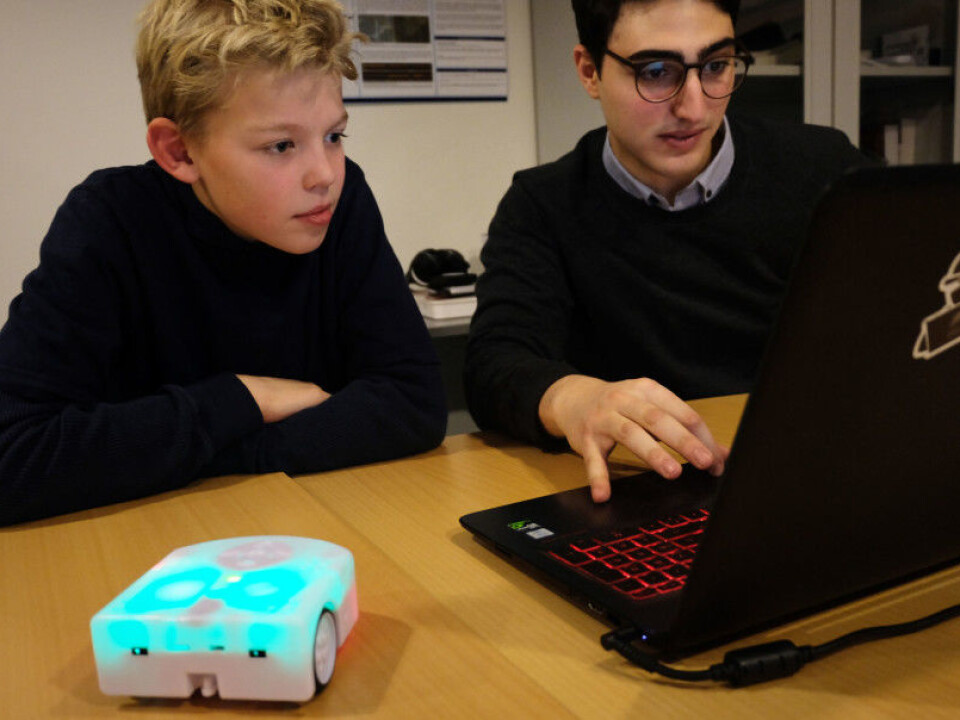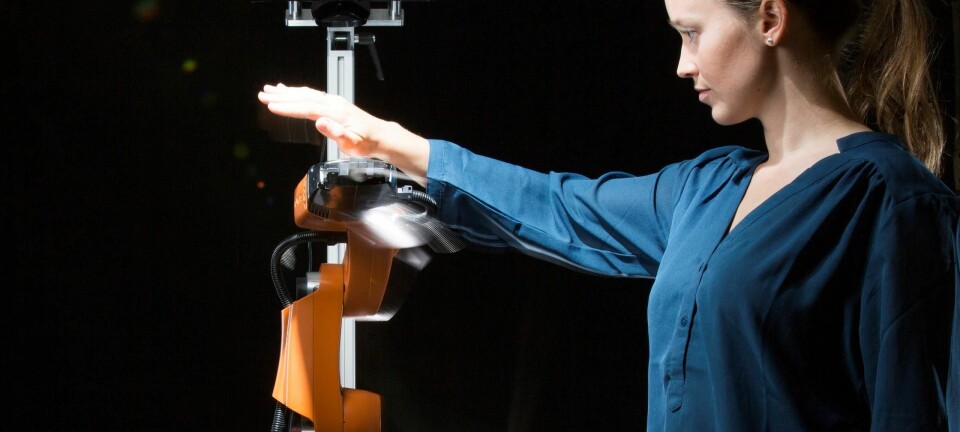
Researcher wants to teach children to program robots
Some researchers think children should be spending more time learning about robots instead of being afraid of their development.
Robots will not replace people's jobs in the future, rather, they will play supporting roles, says Stefano Nichele Associate Professor in the Department of Computer Science at the Oslo Metropolitan University, Norway. He would like to see elementary level children learn how to program robots school.
Recently he took along two of his students, MSC student Haakon Haraldsen Roen and PhD candidate Vako Varankian, to show 10-year-old Eskil Selmer-Torgersen how to program a robot.
"In the car we talked that maybe I could take one home," says Eskil, looking at his father.
"Well, they are a little on the pricy side," says Eskil's Dad, Espen Selmer-Torgersen.

Nichele's robots resemble swarming bees and cost about a hundred euros. They are designed to be programmed by children as young as seven.
Read More: How to build your own personal robot
Simple design and complex behaviour
The robots were developed through an interdisciplinary collaboration between the research groups Art in Society and Artificial Intelligence at OsloMet's Faculty of Technology, Art and Design in Norway. Despite their simple form, the robots can execute quite complicated tasks when several of them work together.
Varankian picks up one of the swarming robot bees from the table and explains to Eskil how it is constructed.
"This is a fairly simple robot that you can try to program later," says Varankian.
The robot consists of a battery and a small computer that can read the sensor's values, which control the robot.
"We use the computer to control the robots," says Varankian, and goes to the computer to activate them. The robots gradually begin to cluster where it's bright. The lighter the surface of the table is, the warmer it is. The robot's sensors can pick up the ambient temperature.
"The robots were inspired by the way honey bees move around in tight clusters in winter to keep warm," says Haraldsen Roen, who helped design the robot.
Eskil like the fact that the robots were inspired by living insects and biology, which he usually thinks of as quite different things.
"The robots perceive that it gets warmer when they cluster together," says Haraldsen Roen.
Read More: Are all your worries about Artificial Intelligence wrong?
Eskil's turn to program
Now it's Eskil's turn to do some programming. Varankian takes him over to the computer and they sit down. Eskil can give the robots different characteristics using a program that determines what the robots will do.
Eskil enters commands for the robot to make sound and drive backwards.
"Now press play to activate it," says Varankian.
The robot doesn't move.
Varankian explains how the robot's sensors work.
"In order for the robot to start doing what you want it to, you have to activate it by holding your hand over it or clapping your hands.
Eskil holds his hand behind the robot, and it starts driving backwards.
"Cool!" he says.
Read More: Surgeons are training robots to become their new assistants
Fear that robots will take people's jobs
Varankian says it's important for children to engage with robots.
"They're going to be surrounded by robots much more in the future. So, it's important to create a healthier relationship with robots than we have today," he says.
But he recognises that people are worried, especially given the future job market.
"We still hear people say that 'robots will take my job,'" says Varankian.
However, research shows that even though some jobs will be lost, overall robots will lead to more new jobs than those lost due to automisation. And many future jobs will revolve around the further development of robots, says Nichele. And he suggests that job quality could improve.
"The big misunderstanding about robots and artificial intelligence is the idea that robots are going to replace people. That's wrong, because robots will play supporting roles. It's not exclusively artificial intelligence that will take over a job. People will be working side by side with the robots," says Nichele.
Read More: Countries should put a universal basic income in place before robots take our jobs
Children are able to use robots
"I'd like kids to be exposed to programming earlier than they are now. Programming was totally new to me when I started university," says Varankian.
Nichele adds, "We need to realise that robots aren't just important for students who are learning about computing and electronics, but that kids can use them, too. Everyone can use them. It shouldn't be so intimidating."
At school, iPads are the closest that kids come to using robots," says Eskil. He thinks it would be exciting to learn more about programming them at school. He says that some of his classmates prefer the natural sciences to technology.
"That's why it's so cool that they combined nature and technology here. The robots are like honey bees in nature. They gather where it's warm and bright," Eskil says.
----------------
Read more in the Norwegian version of this article at forskning.no


































